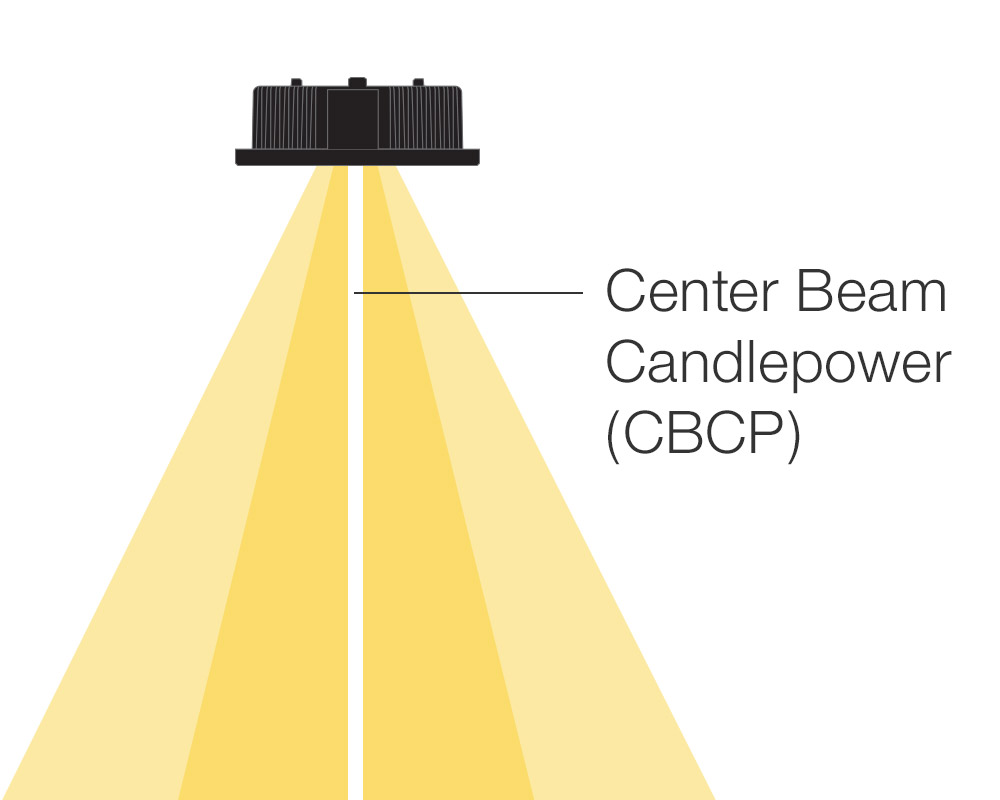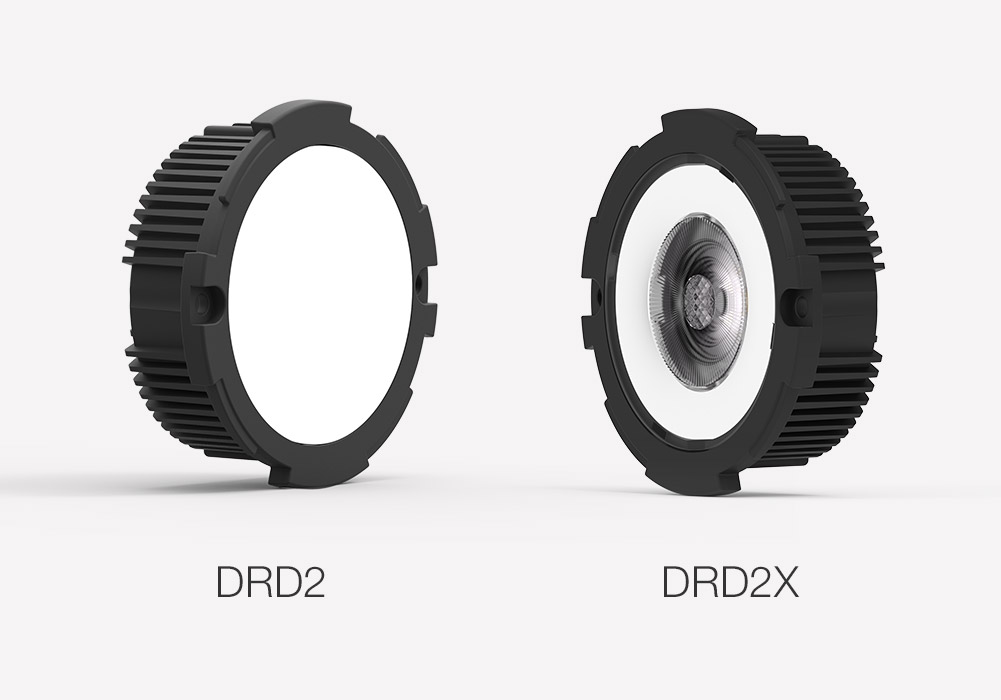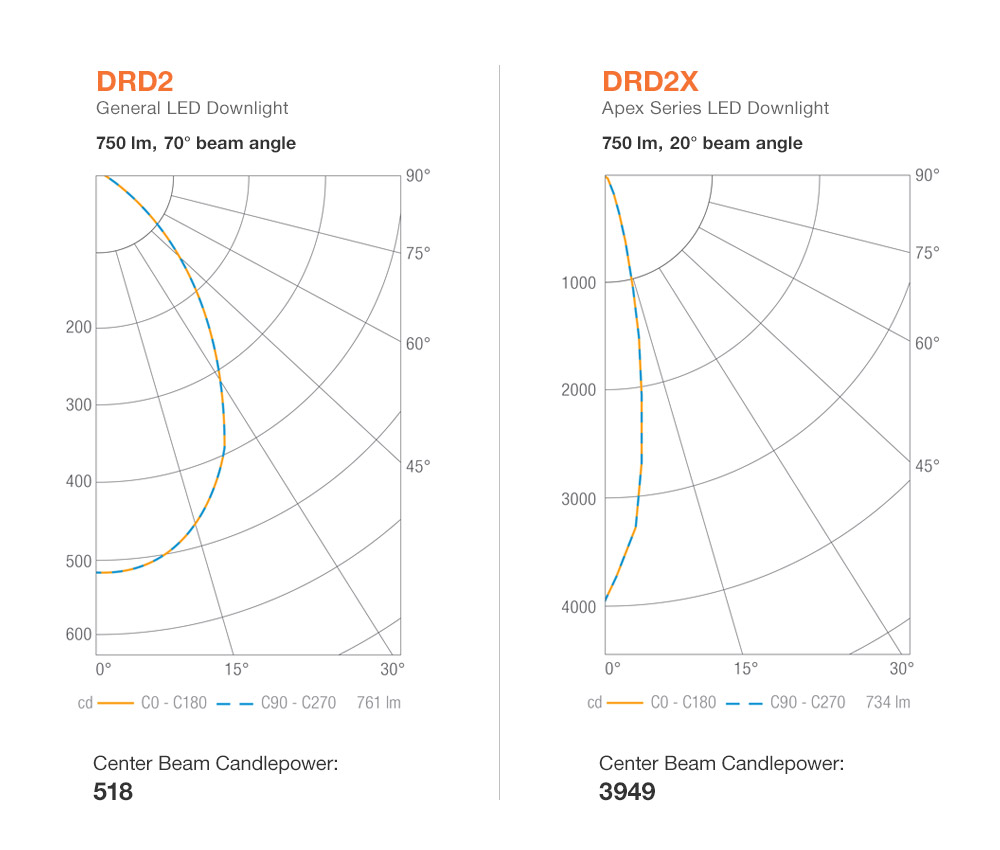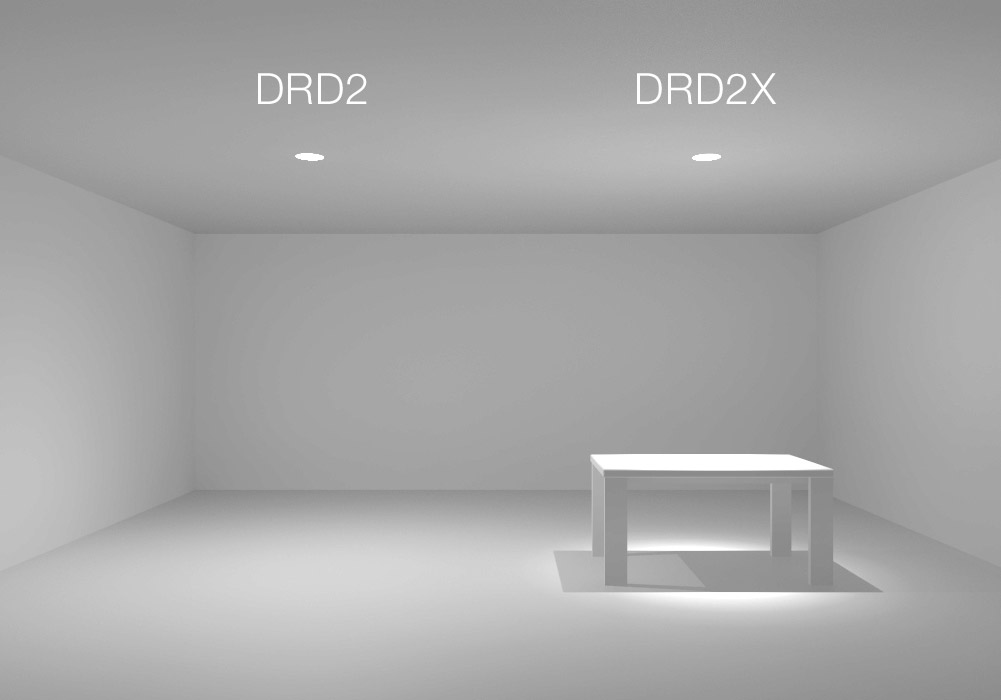If you’ve been keeping up with our recent articles on downlighting photometrics, you’ve already read about how the lighting industry now universally uses lumens, rather than watts, as the broadest distinguishing metric between light sources. You’ve also read that delivered lumens is a better measure of a light’s useful output than total lumens. Now, we’re going to look at another aspect that’s key to improved lighting design and fixture selection: Center Beam Candlepower.

Center Beam Candlepower (CBCP) is a measure of the luminous intensity at the center of a directional light source. Unlike most omnidirectional light sources, such as table lamps, downlights emit light from a single point, in a given direction. Depending on the beam angle, the CBCP could vary greatly, even among fixtures with the same delivered lumens.
Lumens are measured as the total light emitted from a source, at all angles from that source. For this reason, CBCP offers a more use case specific metric for determining lights in a given space.
Depending on the angle of a flood or a spot, the Center Beam Candlepower could vary greatly, even among fixtures with the same delivered lumens.
How to Shop for DMF Lighting Using CBCP
Let’s compare two DMF downlighting products, the DRD2 and DRD2X, to better understand how CBCP practically comes into play when selecting a module for your space.

The 750 Lumen DRD2 is a general downlight, with a 70° beam angle. The 750 Lumen DRD2X is a spot/flood downlight, available in 20°, 30°, or 40° beam angles. With the same trim, DRD2 has a CBCP of 518 Candelas whereas a 20° DRD2X has a CBCP of 3949! The graphic representation below shows how the distribution of the light greatly affects the CBCP.

In practical terms, this means the DRD2 would deliver the same amount of light in a wider pattern, whereas the DRD2X would deliver the same amount of light in a tighter, more concentrated beam.
To apply CBCP as you select the right lights for your space, consider the working surface and use case. For example, in a living room, you might place several DRD2s with their broad beam angle and lower CBCP to generally illuminate the entire area, but you might select the DRD2X to highlight a particular feature of the room, like a work desk, aquarium, or dining table. The DRD2X might also be preferred for spaces with higher ceilings.

Center Beam Candlepower provides another valuable metric to better inform both lighting design as well as manufacturer selection. By taking CBCP into account, you can be sure that you have the right light distribution for your application.
To learn more about other factors in choosing the right lights for your space, see these valuable companion posts:
Color Temperature
Delivered Lumens
Color Rendering Index
Connect on LinkedIn, Instagram, Facebook, or Twitter to stay up to date with everything that’s happening at DMF Lighting.
